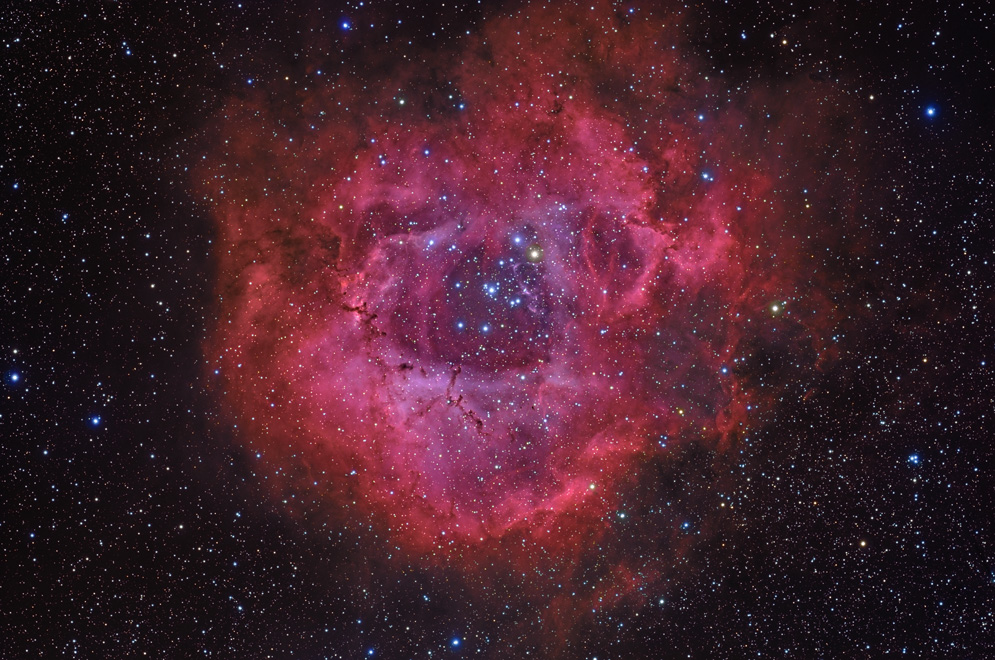
Rosette Nebula: This nebula is a large star-forming region, with a young star cluster. Its color is a result of the ionization of the hydrogen cloud around the star cluster, caused by the high energy of the bright, young stars. As such, its dominant emission is in the hydrogen alpha (Ha) frequency. The nebula actually is made up of NGC2237, NGC2238, NGC2239 and NGC 2246, all of which seem to have been catalogued before it was known that all were part of a large nebula. The small open star cluster NGC2244 can be seen near the center of the nebula; there are other star clusters visually near the Rosette Nebula, but only NGC2244 is known to be physically associated with the nebula. The small, dark globules below and to the left of the center of the nebula (much easier to see in the larger versions of the picture, especially the pure Ha versions) are "Bok globules." This nebula lies about 4,700 light years distant, and is about 140 light years across.
Copyright 2008 Mark de Regt